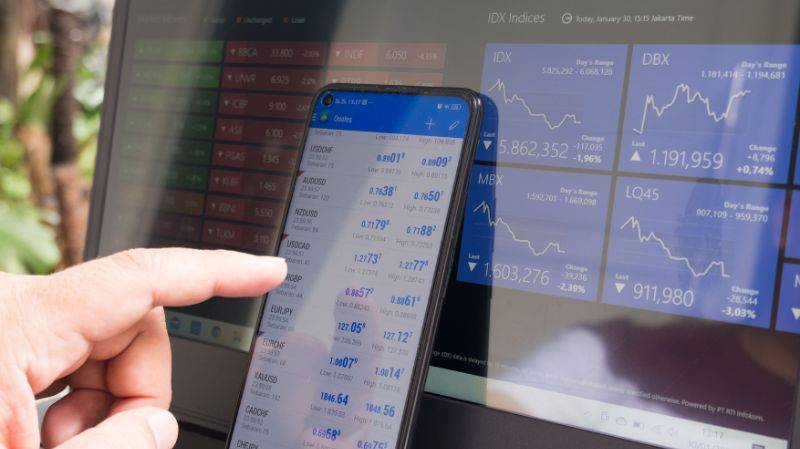Investment diversification is the cornerstone of achieving long-term financial stability. To diversify your investment portfolio, strategically allocate your assets across varied investment avenues. This not only bolsters your risk management approach but also amplifies the potential for robust returns.
Page Contents
Diversification – The Guardian of Investments:
Diversifying is akin to building multiple lines of defense for your investments. The primary objective is to mitigate potential losses in one asset class with gains in another. This approach ensures that a slump in one sector doesn’t obliterate your entire portfolio’s value.
Ensuring Portfolio Equilibrium:
A harmoniously balanced portfolio can weather economic storms more effectively. When you diversify your investment portfolio, you equip it with the resilience to counteract the ebb and flow of market dynamics.
Scrutinizing Asset Distribution:
To initiate diversification, first, take stock of your current investments. Are you heavily skewed towards tech stocks? Or perhaps, you’re deeply invested in real estate? Pinpoint areas of concentration that might expose you to undue risk.
Deciphering Your Risk Compass:
Risk is an integral part of investments. Determine your risk threshold. Whether you’re risk-averse or a risk-taker, your asset allocation should mirror your comfort zone.
Stocks and Equities:
While equities are renowned for their potential high returns, they’re equally infamous for their volatility. To balance the scales, diversify across different sectors, industries, and company sizes.
Bonds – The Stabilizers:
Bonds, especially government bonds, are perceived as the bedrock of stability in an investment portfolio. Diversify among short-term, medium-term, and long-term bonds to optimize returns while keeping risks at bay.
Real Estate – Tangible Assets:
Property investments, be it direct ownership or through REITs, offer dual benefits: rental income and potential capital appreciation. Moreover, real estate often serves as a buffer against inflation.
Diverse Investment Assets:
Go beyond traditional stocks and bonds. Delve into commodities like gold, silver, or oil. Explore hedge funds, private equity, or even venture into collectibles like art and antiques. Such alternative investments can be a game-changer in portfolio diversification.
The Global Investment Map:
Diversify geographically by investing in international markets. This exposes you to growth stories from emerging economies and developed markets, cushioning your portfolio against local economic downturns.
Establishing Allocation Benchmarks:
Post-diversification, it’s imperative to have allocation targets for each asset class. These benchmarks guide future investment decisions and reallocations.
Routine Portfolio Check-ups:
An investment portfolio is dynamic. As market conditions evolve, so should your asset allocation. Commit to biannual or annual reviews, recalibrating your portfolio to align with your diversification goals.
Engaging Investment Gurus:
The financial market is intricate. Leveraging the expertise of financial consultants or advisors can provide nuanced strategies tailored to your goals. Their insights can guide you on how best to diversify your investment portfolio, considering market trends and forecasts.
Digital Assets and Cryptocurrencies:
In the contemporary investment landscape, digital assets like Bitcoin, Ethereum, and other cryptocurrencies have gained significant traction. While they come with their unique set of risks, they offer an alternative avenue to diversify your investment portfolio. Engaging in these assets helps tap into the potential of blockchain technology and the future of finance.
Robo-Advisors – The Tech Touch:
Robo-advisors, powered by algorithms and AI, provide automated investment strategies based on your risk profile. Integrating them into your diversification plan can add an element of data-driven precision and consistency.
Green Energy Investments:
With the global shift towards sustainable energy, sectors like solar, wind, and hydropower offer promising growth prospects. Investing in these sectors not only supports eco-friendly initiatives but also broadens the horizons of your portfolio.
Healthcare and Biotech:
Amid the global emphasis on health, pharmaceuticals, biotechnology, and medical equipment sectors are witnessing unprecedented growth. Diversifying into these sectors taps into their robust potential.
Mutual Funds:
If direct stock market investments seem daunting, mutual funds offer a simplified way to diversify your investment portfolio. They pool money from numerous investors to invest in a diversified mix of stocks, bonds, or other assets.
ETFs (Exchange Traded Funds):
ETFs track indexes like the S&P 500 and are traded on stock exchanges. They combine the diversification benefits of mutual funds with the flexibility of stock trading, making them a valuable addition to any portfolio.
Investment Horizon:
Diversification isn’t just about the ‘what’ but also the ‘when.’ An investor nearing retirement may prioritize bonds or fixed-income assets, while a young investor might lean heavily on equities for long-term growth. Recognize where you stand in your investment journey and diversify accordingly.
Compound Interest – The Eighth Wonder:
Time can be an ally. The longer you stay invested, the more you benefit from compound interest. This principle underscores the importance of diversification across time-bound assets, balancing short-term and long-term holdings.
Fixed Income Assets:
For those seeking stability in their investment journey, fixed-income assets provide a predictable return over a specified period. Whether it’s corporate bonds, government securities, or fixed deposits, these instruments play a pivotal role when you diversify your investment portfolio. They act as a safety net during tumultuous market conditions, offering consistent returns.
Debt Mutual Funds:
Another avenue to explore within the fixed-income realm is debt mutual funds. Unlike equities, they primarily invest in bonds and money market instruments. They offer a balanced approach, combining regular income and capital appreciation, making them a suitable tool for portfolio balance.
Precious Metals – Gold and Silver:
Historically, precious metals like gold and silver have been safe-haven assets. During market downturns, they often show resilience or even appreciation. Including them in your strategy can add another layer as you diversify your investment portfolio.
Crude Oil and Agricultural Products:
Commodities like oil, wheat, or soybean provide an alternative investment avenue. They react differently to global economic changes compared to traditional assets, offering diversification from typical market movements.
Infrastructure Investments:
Infrastructure funds focus on physical assets such as highways, bridges, and utilities. These long-term investments tend to be less volatile than equities and can offer steady cash flows, making them a valuable component in a diversified portfolio.
Tangible Assets – Art and Collectibles:
While not conventional, investments in art, antiques, and other collectibles can be both a passion and a diversification strategy. Their value doesn’t always correlate with traditional markets, offering another avenue to balance portfolio risk.
Liquid Assets and Their Role:
Liquidity refers to how quickly an asset can be converted into cash without significantly affecting its price. As you diversify your investment portfolio, ensure you have a mix of liquid and illiquid assets. Liquid assets, like money market funds or certain stocks, provide flexibility for unforeseen financial needs.
Balancing Liquidity and Returns:
While liquid assets offer quick cash access, they might not provide the highest returns. Illiquid assets, such as real estate or private equity, might offer higher returns due to their longer investment horizon. Striking the right balance based on your financial needs is essential.
Conclusion:
In the intricate tapestry of investments, diversification stands out as a beacon of prudence and strategy. By continually evolving and adapting your asset allocation, you’re not just safeguarding your wealth but setting the stage for holistic financial growth. Whether you’re a novice investor or a seasoned financier, remember to diversify your investment portfolio to navigate the multifaceted world of investments with confidence and clarity.
The investment realm is vast and ever-evolving. To diversify your investment portfolio effectively, one must be attuned to global trends, emerging sectors, and innovative investment vehicles. As you traverse your investment journey, let diversification be your compass, guiding you through market storms and sunny economic days alike. It’s not just about wealth preservation but also about capitalizing on a world of opportunities.
A well-diversified portfolio is the bedrock of sustainable wealth generation. By spreading your investments across various assets, sectors, and geographies, you harness the power of balance. This balance not only safeguards your investments but also paves the way for consistent growth. Remember, to diversify your investment portfolio is to weave a safety net, ensuring that no single market downturn can unravel your financial dreams.











